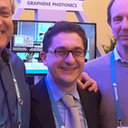Overexpression of c-met protooncogene product and raised Ki67 index in hepatocellular carcinomas with respect to benign liver conditions.
Słowa kluczowe
Abstrakcyjny
The c-met protooncogene encodes a 190-kd transmembrane tyrosine kinase. This molecule is the receptor for the hepatocyte growth factor (HGF), which is an important mitogen for hepatocytes both in vitro and in vivo. In experimental models, the c-met transcripts appeared strongly expressed by actively proliferating oval cells (OCs). We evaluated the phenotypic modulation of the c-met protooncogene product (c-met pp), in 10 hepatocellular carcinomas (HCCs), 5 focal nodular hyperplasias (FNHs), 4 cases of fulminant hepatitis (FH), and 1 regenerated liver, selected to include the different biological states of hepatocyte (mature normal hepatocytes, transformed ones, and OCs). The supposed mitogenic effect of HGF was analyzed by comparing c-met pp overexpression with the Ki67 index, whereas anti-OV-6 antibody was used for comparison with the presence of OCs. The anti-c-met pp showed a typical plasma membrane-specific staining in all cases. The signal was much stronger in the HCCs than in the benign conditions. The anti-OV-6 monoclonal antibody showed positive immunostaining in many of the cells expressing c-met pp. The percentage of Ki67+ nuclei in high-grade HCCs paralleled c-met protooncogene overexpression. The c-met pp in OV-6+ cells suggests that the paracrine mechanism postulated in experimental models could also apply to human liver.


